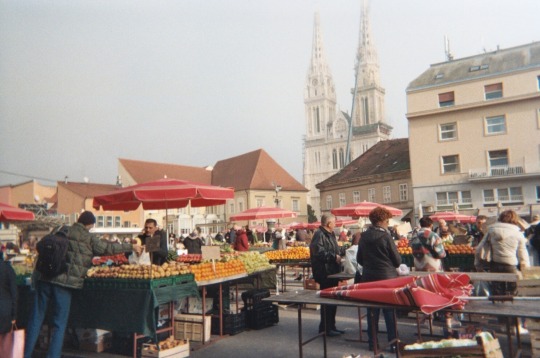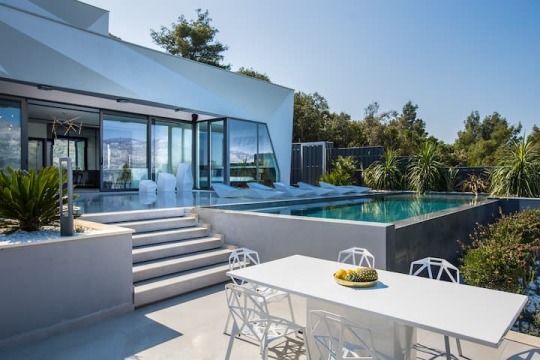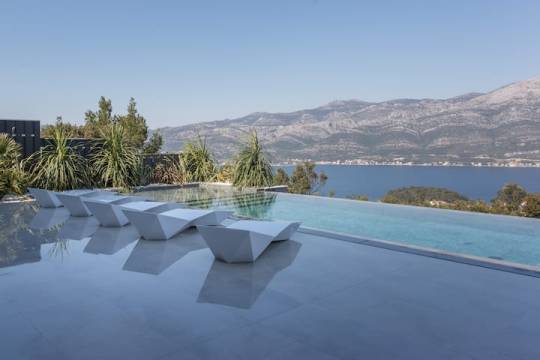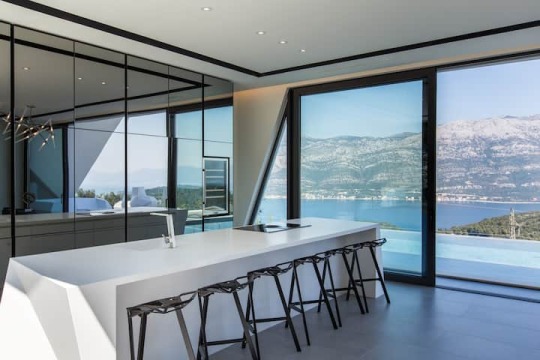#Korčula
Text

Korčula Island in CROATIA
96 notes
·
View notes
Text

Architecture on Korčula Island, Croatia.
15 notes
·
View notes
Text



Croatia (2) (3) by Lucija Jukić
Via Flickr:
(1) It is the parish church of old Zagreb, built in the 13th century. The tiles of the roof represent the coat of arms of Zagreb (white castle) and Kingdom of Croatia, Slavonia and Dalmatia. On the square, that bears the same name as the church, are situated important governmental buildings (of the government, the parliament and the constitutional court etc.). The roof always fascinated me as a child.
(2)Korčula, one of my favorite places.
(3) The Dolac Market, Zagreb’s most famous market, photographed in November 2022.
#churches#tiles#alleys#alleyway#golden light#roaming the streets#market#market stalls#people#city life#croatia#zagreb#korčula
6 notes
·
View notes
Text

Korčula’s town gate. Venetian Renaissance of late XVI th century Taken on September 1st, 2020 (iPhone 8)
#photography#architettura rinascimentale#architecture photography#Korčula#dalmatia#croatia#pic for sale#hdr#europe#island#otok korčula#southern dalmatia#croatia full of life#stairway
5 notes
·
View notes
Text
Question of the week no. 2:
Can you just imagine?
If the Balkan Peninsula is a modern Beleriand while Dalmatian Islands were Undying Lands, what do you think?
#question of the week#silm questions of the week#what do you think?#can you imagine#the balkan silm trash#balkan mainland#dalmatian islands#hvar#brač#korčula
0 notes
Link
#Adria#AdriatischeKüstenstraße#Altstadt#Arena#Dalmatien#DiokletianspalastSplit#Dubrovnik#Historisch#historischeStädte#Hvar#Insel#Korčula#kristallklar#Krka#Kroatien#Küste#Küstenlinie#Meer#Nationalpark#Naturpark#PlitvicerSeen#Pula#Reiseführer#Rovinj#Sehenswürdigkeiten#Split#Stadt#Wasser#Winnetou#Zagreb
0 notes
Text
Hello :)
I would like to share my experience from Apartmani Luka on Korčula and recommend it to everyone who is visiting to Korčula soon.
Please, find the whole review on my blog :)
https://freaksintraveltrouble.wordpress.com/2023/07/17/where-to-stay-on-korcula/

1 note
·
View note
Text
Best Places To Visit In Croatia For Couples
Croatia offers a range of romantic destinations for couples seeking a memorable getaway. Here are some of the best places to visit in Croatia for couples:
Dubrovnik: Explore the picturesque city of Dubrovnik, known for its medieval walls and stunning Old Town. Walk hand-in-hand along the historic streets, take a cable car to Mount Srđ for panoramic views, and enjoy a romantic sunset cruise along the Adriatic coast.
Hvar: Experience the romantic island of Hvar, known for its vibrant nightlife and beautiful beaches. Explore the charming town with its narrow streets and stunning architecture, visit the Franciscan Monastery, and relax on the secluded Pakleni Islands.
Plitvice Lakes National Park: Discover the natural beauty of Plitvice Lakes National Park, a UNESCO World Heritage site. Take a leisurely stroll along the wooden pathways, admire the cascading waterfalls, and immerse yourselves in the serene atmosphere of this enchanting park.
Rovinj: Explore the charming town of Rovinj, located on the Istrian Peninsula. Wander through the narrow cobblestone streets, visit the hilltop Church of St. Euphemia for panoramic views, and enjoy a romantic dinner by the harbor.
Split: Visit the lively city of Split, home to the ancient Diocletian's Palace. Explore the historic Old Town, take a romantic walk along the Riva promenade, and visit the picturesque Marjan Hill for breathtaking views of the city and the Adriatic Sea.
Korčula: Experience the tranquility of the island of Korčula, known for its vineyards and olive groves. Explore the medieval streets of Korčula Town, visit the birthplace of Marco Polo, and enjoy the pristine beaches and crystal-clear waters.
These destinations in Croatia offer a mix of history, natural beauty, and romantic ambiance, creating an unforgettable experience for couples.
Keep Reading
0 notes
Text
A 7000-year-old road has been unearthed off the coast of Croatia revealing insights into the ancient Hvar culture’s engineering knowledge.
741 notes
·
View notes
Text

Back in Croatia
2023
In the background you can see the islands of Brač, Hvar and also Korčula.
320 notes
·
View notes
Text
Appendix: last strongholds of late Slavic paganism.
The Polabian country (West Slavic; baptised 1168)
Christianised in 1168 with the conquest of Rujan (Rügen) by Waldemar I of Denmark, which also extinguished the sovereignty of the Rani tribe that previously controlled the island. Significant pagan strongholds on the Polabian mainland included Vologošč (Wolgast) and Hovolin (Holbog), east of Rujan, whose pagan inhabitants worshipped Yarovit above all other gods as late as April 1127 (Ebo, 1157, Life of Saint Otto).
The Obotrite country (West Slavic; baptised c. 1167)
The Obotrites were still pagan during the reign of prince Niklot (b. 1090, d. April 1160). His lands were targeted during the Wendish Crusade (1147); moreover, Helmold of Bozov claims in the Chronicle of the Slavs (1168) that the worship of Radegast, Živa and Poren(!!) strengthened during his reign. The Obotrite royal family was partially baptised before the reign of Niklot; his uncle and former regnant, prince Henry (b. 1066, d. 1127), was a Christian. It appears Niklot publicly renounced Christianity in favour of the old faith during his reign, perhaps in a move to appeal to the country's remaining pagan population; in the same text, however, Helmold claims Niklot confessed belief in God in a 1150 letter penned to prince Henry III, the Duke of Saxony (a political move more than a testament of faith, I'd say).
Niklot's issue, prince Pribislav of Mecklenburg, accepted the Christian faith in the 1160s and fought with the Saxons (the on-and-off allies of the Obotrites) against the still pagan Rani on Rujan.
Kievan Rus' (East Slavic; baptised 988)
Still officially pagan during the ascension of Vladimir I Sviatoslavych to the throne of the Grand Principality of Kyiv in 978. Though Britannica claims Christianity existed in the Rus' lands prior to Vladimir's personal conversion, it seems Vladimir himself remained loyal to his people's folkways long after the beginning of Christian proselytisation to the Rus', taking eight hundred concubines and erecting idols to the old gods in Novgorod and Kyiv.
Vladimir seems to have attempted to organise Rus' polytheism into a coherent institution during the early years of his reign in Kyiv, perhaps after the model of Christianity; he erected idols to seven gods in the city—Perun; Mokoš; Dažbog; Sem; Rgel; Hors; and Stribor (and perhaps also to Veles, on Kyiv's market). I share the opinion of recent scholarship that all of the gods named in the Russian Primary Chronicle and subsequent sources are Slavic in origin.
Vladimir would eventually accept the Christian faith in 988 in exchange for the hand of Anna Porphyrogenita, sister of the Byzantine emperor Basil II.
The Narentine country, or ‘Pagania’ (South Slavic; baptised c. 873)
The Narentines were among the Slavic tribes that established themselves on the eastern shore of the Adriatic during the second wave of Slavic settlement in the Balkans, starting in the 9th century (this is also the wave that brought Croats and Serbs to the Balkans; traces of earlier Slavic presence in the region can be traced to the 6th century). An agricultural people, the Narentines settled in what is today Makarska and the neighbouring islands of Brač, Hvar and Korčula, in southern Dalmatia; they quickly turned to piracy, and were fierce enemies of the Venetians.
According to Constantine VII's De Administrando Imperio, the Narentines were fiercely loyal to the Slavs' old faith, hence their sobriquet Paganians, given to the Narentines “because they did not accept baptism in the time when all Serbs were baptized” (note: it is generally accepted nowadays that Constantine's identification of the Narentines as Serbs is spurious). In March 870, they kidnapped the emissaries of the Pope during their return from the Fourth Council of Constantinople; the incident was used as pretext by the Byzantines to force the Narentines into submission.
The Narentines were Byzantine tributaries for a while, participating in the latter's attacks on the Saracenes; they remained pagan unti 873, when the Byzantine admiral Niketas Oöryphas convinced them to embrace Christianity. The Narentines survived as an independent polity until the 11th century, eventually being conquered by the Venetians, and then finally the Croats.
9 notes
·
View notes
Text






Villa Korčula Diamond, Korčula, Split Riviera, Croatia.
Book Here!
0 notes
Text



Islands in Croatia (2) (3) by Dujuan Guo
Via Flickr:
(1) Streets in Korčula
(2) (3) Houses in Orebić
0 notes
Text

Croatia, Korčula
Deeply Door Obsessed
20 notes
·
View notes
Text

The cozy quiet room at Korčula Summer School is shown but Wardell prefers reading in the bathroom.
#animal crossing new horizons#acnh#new horizons#animal crossing#animal crossing community#animal crossing creations#acnh photos#acnh switch#acnh inspiration#acnh life#acnh community#acnh inspo#acnh screenshots#happy home designer#happy home paradise#happy home dlc#acnh interior#acnh wardell
50 notes
·
View notes
